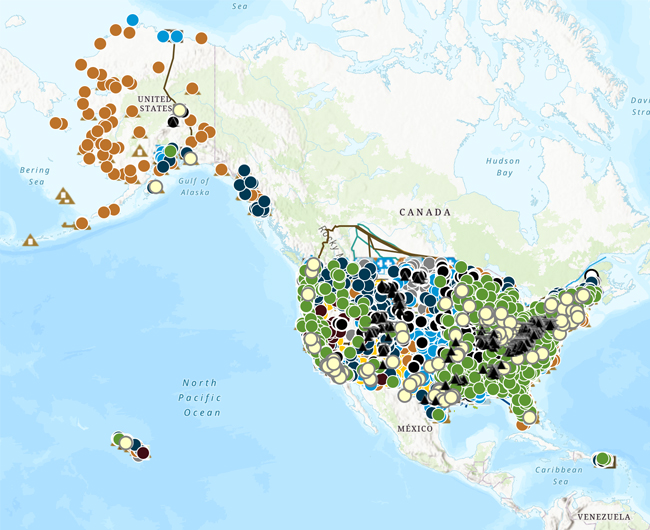Profile Overview
U.S Energy Atlas with total energy layers
 View the interactive map
View the interactive map Quick Facts
- Arizona's Palo Verde Nuclear Generating Station is the largest nuclear power plant, the largest net generator of electricity, and, with a net summer capacity of 3,937 megawatts, the second-largest power plant of any kind in the nation. In 2022, it accounted for 4% of the nation's nuclear generation.
- Arizona ranks second in the nation in solar energy potential after Nevada, and in 2022, it was fifth in solar-powered net generation from the state's utility- and small-scale photovoltaic and solar thermal power plants together. Solar energy provided the state with more power than all of Arizona's other renewable energy sources combined.
- In part because of its large population and mild winter climate, Arizona consumed less total energy per capita than almost four-fifths of the states in 2020.
- In 2022, 99% of Arizona's total electricity net generation was provided from 6 sources: natural gas (42%); nuclear power (29%); coal (12%); solar energy (10%); hydroelectric power (5%): and wind (1%). Biomass, hydroelectric pumped storage, and petroleum, supplied the rest.
- In 2022, Arizona hydroelectric power plants supplied their smallest amount of electricity in more than 30 years. They accounted for about 5% of Arizona's total in-state electricity generation.
Last Updated: May 18, 2023
